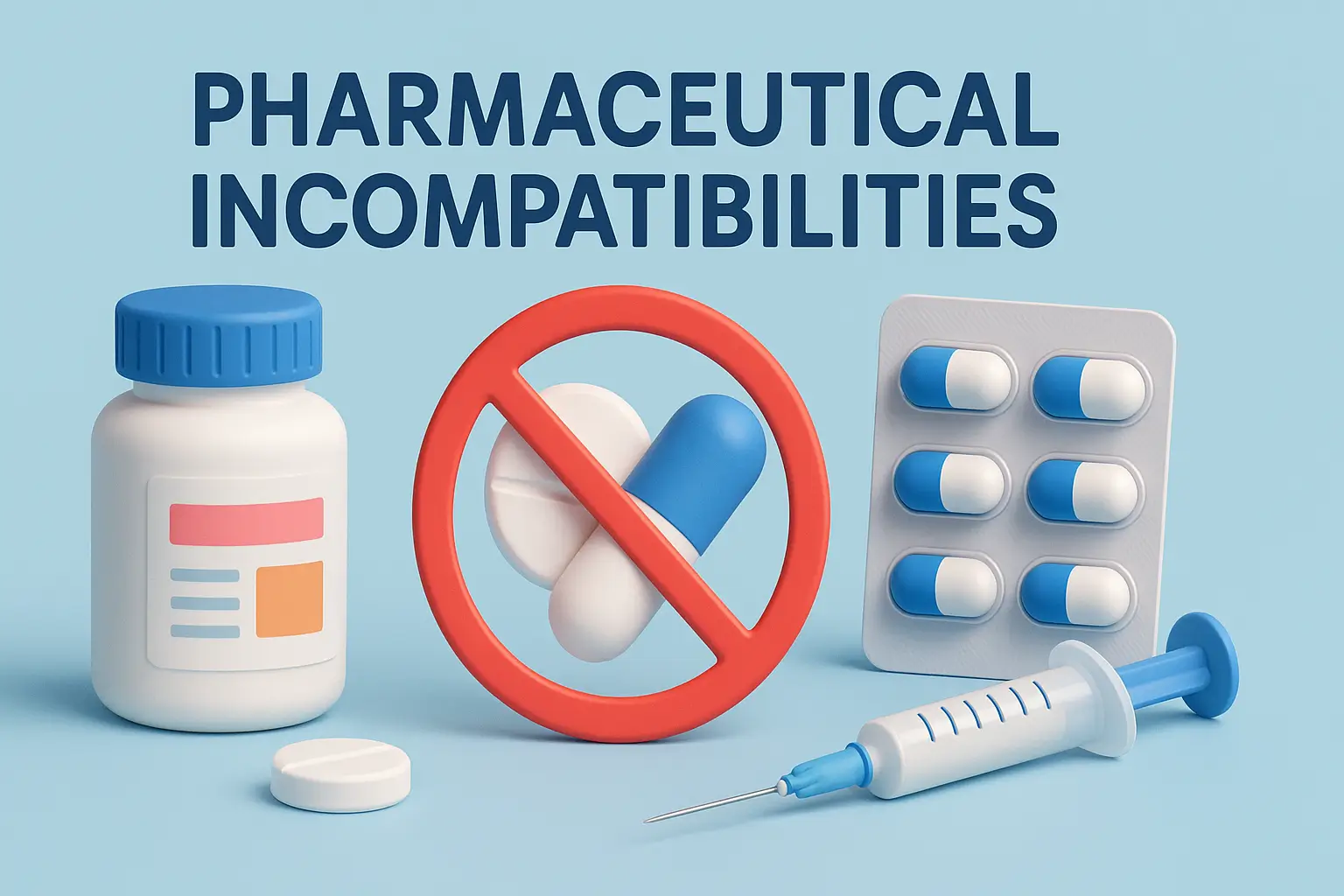Definition of Pharmaceutical Incompatibilities:
- Pharmaceutical incompatibility refers to undesirable interactions between drugs or between a drug and its excipients (non-active ingredients) that can affect the safety, efficacy, or stability of a pharmaceutical product.
- These incompatibilities can occur during the formulation, storage, or administration of drugs, leading to changes in physical appearance, chemical stability, or therapeutic effect.
Classification of Pharmaceutical Incompatibilities:

- Pharmaceutical incompatibilities can be classified into three main types:
1. Physical Incompatibility
-
- Definition: Occurs when physical changes in appearance or properties (such as solubility, color, or texture) are observed without any chemical reaction between the components.
- Examples:
- Precipitation: When two solutions are mixed, and an insoluble precipitate forms.
- Immiscibility: When two liquids do not mix (e.g., oil and water emulsions).
- Liquefaction of powders: Certain powders may liquefy upon mixing due to moisture absorption (eutectic mixtures).
- Common Causes: Changes in solubility, particle size, pH, or mixing of incompatible solvents or excipients.
2. Chemical Incompatibility
-
- Definition: Occurs due to a chemical reaction between the drug and other ingredients, resulting in degradation, loss of efficacy, or the formation of toxic by-products.
- Examples:
- Oxidation: Drug degradation due to exposure to oxygen (e.g., ascorbic acid).
- Hydrolysis: Breakdown of drugs due to reaction with water (e.g., esters or amides).
- Complexation: Drug interaction leading to the formation of complexes that reduce drug availability (e.g., tetracyclines with calcium or magnesium).
- pH-dependent degradation: Drugs sensitive to pH changes, like aspirin, can degrade into inactive forms.
- Common Causes: Exposure to light, heat, moisture, pH changes, or reaction with excipients.
3. Therapeutic Incompatibility
-
- Definition: Occurs when two or more drugs administered together produce undesirable pharmacological effects or reduce each other’s efficacy.
- Examples:
- Synergistic effects: Combined drugs may lead to an exaggerated response, resulting in toxicity (e.g., alcohol and sedatives).
- Antagonistic effects: One drug may reduce or negate the effect of another (e.g., antacids reducing the absorption of antibiotics).
- Altered absorption, distribution, metabolism, or excretion: One drug may interfere with the pharmacokinetics of another (e.g., warfarin and certain antibiotics).
- Common Causes: Drug interactions due to pharmacodynamic or pharmacokinetic interference, administration route, or timing of drug intake.

